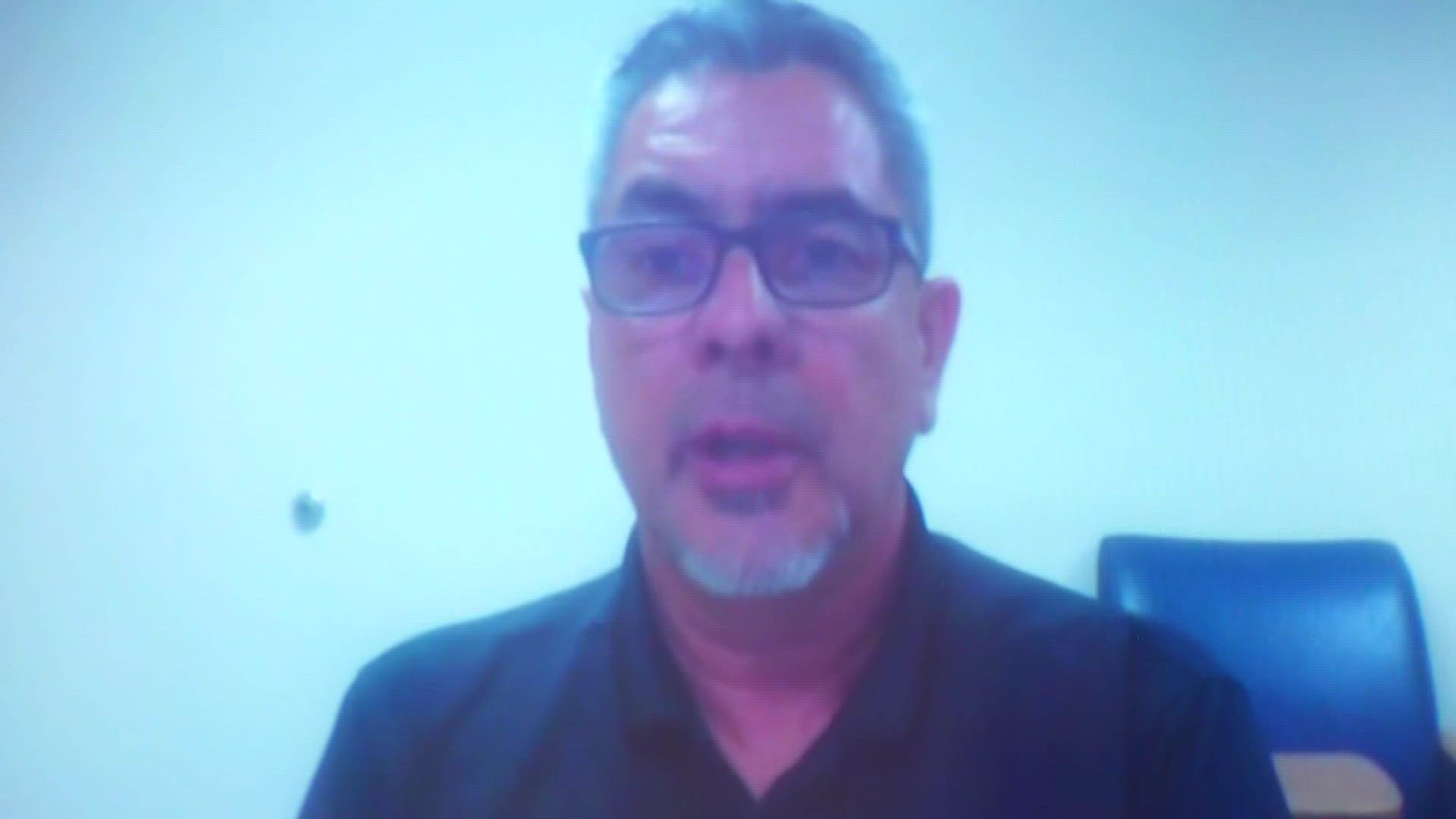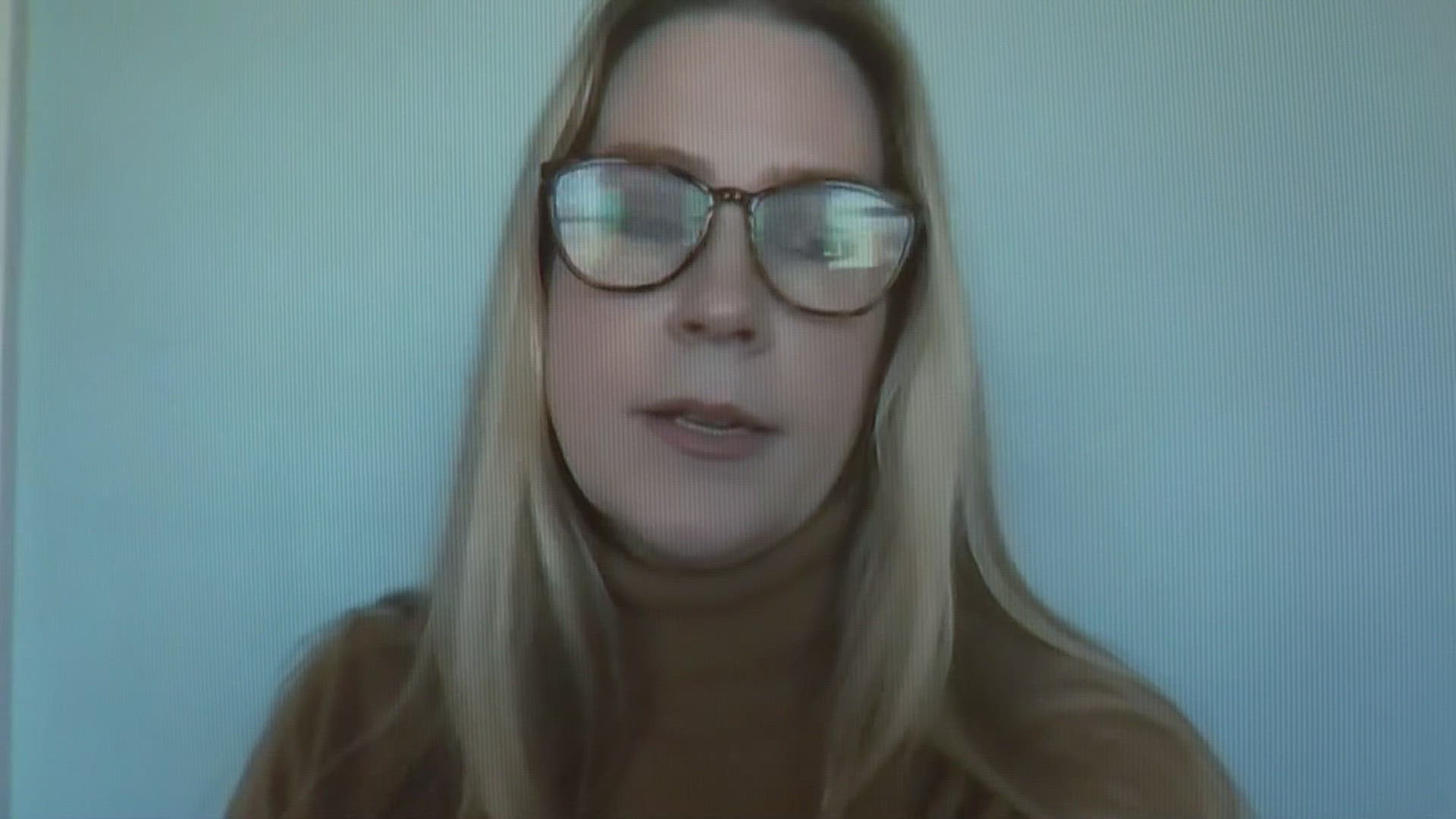SEATTLE — Seventeen passengers of Alaska Airlines flight 1282, which lost a panel off its fuselage at 16,000 feet, leaving a gaping hole in the plane, have joined a request for class action against the air carrier and Boeing, saying actions taken by both parties put them in a potentially life-threatening situation.
The Stritmatter Firm, which is handling this case, held a press conference on Thursday where two passengers spoke about their experiences on board. They described chaos, confusion and abject terror in the minutes after the panel ripped away from the jet.
Suzannah Anderson was in seat 1C when she heard a loud explosion coming from the rear of the plane. She said her ears started to ring and she saw what looked like white smoke, but what she later learned was mist, filling the plane. She heard screaming and crying, items began to fly around the cabin and she witnessed flight attendants struggling to close the door of the cockpit.
"Looking at the flight attendants' faces, it was clear to me that this wasn't going to go well," Anderson said.
Believing she would die, Anderson struggled to connect to the plane's Wi-Fi to say her goodbyes to her loved ones.
"Sent my son a message letting him know that he was the, and has been, the best part of my life," she said. "He did respond back, thankfully. Unfortunately, during that time, my husband and a few other people I could not get through to. That was one of my biggest thoughts, was the grief that I wouldn't get to say goodbye."
Garet Cunningham was sitting in row 28 when the panel separated from the side of the plane. He said he and the other passengers near him were able to see the gaping hole in the fuselage. Unable to comprehend what he was seeing, he started to wonder if he would survive.
"I wasn't prepared to die on this flight," Cunningham said.
When the oxygen masks dropped, Cunningham secured his mask over his face, but there was no oxygen flowing through. The attorneys handling this case said a majority of the passengers who have reached out to them reported that their oxygen masks did not work.
Both Cunningham and Anderson said they did not hear any communication over the loudspeaker, and all they could hear was a rush of wind throughout the cabin. They both recalled being unsure if they could safely land. They didn't know they were safe until they had come to a stop on the runway in Portland.
"It just doesn't make sense that that part of the plane came off," Cunningham said. "My mind just could not grasp what was going on."
Watch the full interviews:
Firm adds Alaska Airlines to class action request
While the airline initially was not named in the firm's class action request, following media reports and other information discovered over the course of the investigation, the company chose to add them as a defendant.
The firm had previously been unaware that a warning light indicated an issue with the jet's auto-pressure system on three different occasions, leading the airline to restrict the plane to domestic flights, but not ground it completely.
The airline has purchased roughly a third of the 737 Max 9 jets manufactured by Boeing, attorney Daniel Laurence said Thursday. The suit claims that Alaska was negligent in its handling of Boeing products, knowing the manufacturer's recent, troubled history.
"(Alaska) was surely in a position to know some of the situation with Boeing... that is indicative of a really unsettling trend which the FAA has now identified, the NTSB is aware of, Boeing is certainly aware of and Alaska has now conceded is of deep concern to it and should have been of deep concern to it quite some time ago," Laurence said.
Laurence also cited that there were well-known quality assurance issues with Spirit AeroSystems, which is the supplier for the fuselage of the plane, and also the door panel that detached from the aircraft.
"These problems have resulted largely from Boeing shifting their focus from engineering safety to creating shareholder value," Laurence said. "These are not mysteries to Alaska. This is all essentially common knowledge within the aircraft industry."
The CEO of Alaska announced in a recent video to customers and shareholders that it would be taking steps to insert its own mechanics and quality assurance inspectors in Boeing factories. The aerospace manufacturer has boasted in recent years about cutting out much of the human element of its quality assurance programs, relying on technology and mechanics self-certifying that work has been done correctly.
The difference between life and death: A few thousand feet
A concern voiced by attorneys and echoed by both passengers of flight 1282 is what could have happened had the door plug failed after the aircraft had reached a higher altitude and whether any of the passengers would have survived that failure.
Laurence explained that not only would the oxygen have been thinner at a higher altitude, but the pressure differential between the inside and the outside of the fuselage would have been greater, meaning the door plug may have potentially unleashed much more damage and injury on those inside the aircraft when the panel finally gave way.
"It is rare that we have an event like this that people survive," Laurence said.
Laurence called Alaska's offer of $1,500 and three free counseling sessions to impacted passengers "paltry" in the face of their experiences.
"This is not a one-off where one or two passengers felt a little bit upset. This was a terrifying incident for virtually everyone on board."
The firm is in contact with 15 more passengers who are considering joining the class action request. More passengers have also joined a second lawsuit filed by attorney Mark Lindquist against Alaska and Boeing earlier this week, with more in talks.
KING 5 has reached out to Alaska Airlines and Boeing for comment.


